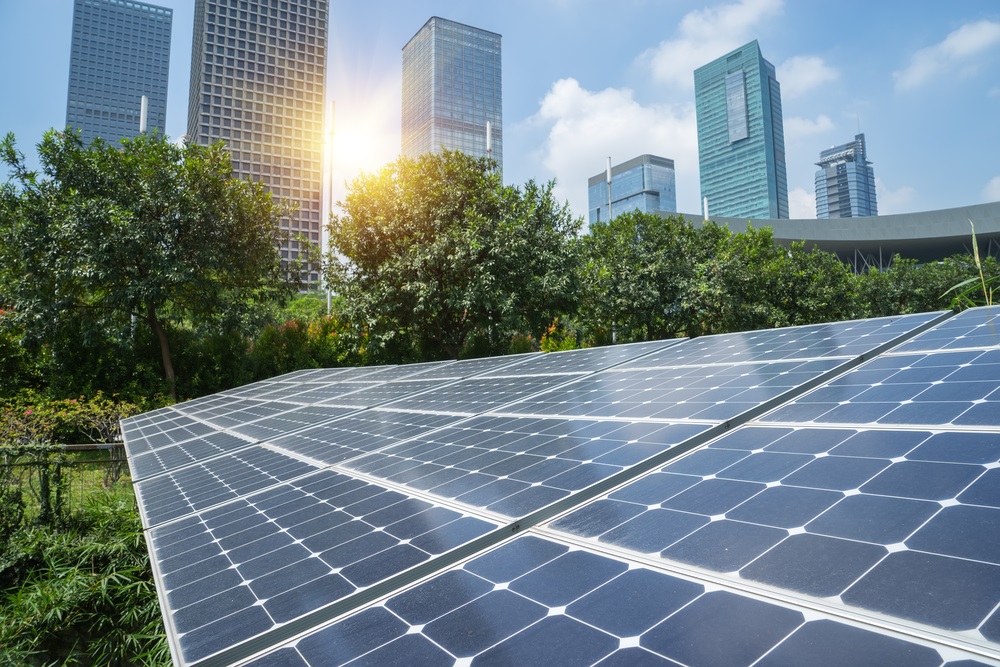Net Zero Buildings

Net Zero Buildings: The Future
What is ‘Net Zero’ and why is it important?
Buildings worldwide account for more than 40% of energy use and almost a third of greenhouse gas emissions. This is projected to more than double by 2030 if something isn’t done now!
Net zero energy buildings are those that generate 100% of their energy needs on-site. The World Green Building Council understands that this isn’t an achievable goal for all situations, so they are striving for buildings to source all energy from renewable sources on-site and/or off-site. If this is achieved, the volume of energy used will drop enormously, having a significant positive affect on the environment.
An example of a building already operating sustainably is The Edge, a 40,000 sqm office building in Amsterdam. The building uses 70% less electricity than comparable assets through utilising sustainable technologies and innovative design including a solar panel roof, smart lighting, rainwater reuse, thermal energy storage and a mobile app to help users reduce their personal energy usage.
The need to act is becoming increasingly more urgent: 2017 was one of the three warmest years on record and the five-year average from 2013 – 2018 was also the highest on record. We’re experiencing extreme weather conditions, rising sea levels and increased levels of greenhouse gases. This has led to the 17 Sustainable Development Goals (SDGs), which are vital for all buildings, developed or being designed, to strive towards. Ultimately, the aim is for net zero buildings to become a standard practice.
How is measured?
LEED (Leadership in Energy and Environmental Design) is an internationally recognized green building certification system, providing third-party verification that a building or community was designed and built using strategies aimed at improving performance across all the metrics that matter most: energy savings, water efficiency, CO2 emissions reduction, improved indoor environmental quality, and stewardship of resources and sensitivity to their impacts.
How does it affect Facilities Management?
There is an abundance of opportunities available for facilities management teams to change or improve current procedures to utilise renewable energy resources and make their work much more sustainable. The list of things to consider is vast including, lighting, air ventilation, greenery and water sources to name a few! According to the Green Building Alliance, around 70% of the decisions associated with environmental impacts are made within the first 10% of the design process. This means it is becoming increasingly important for Facilities Managers to be involved with the design/development stage, to ensure that they can implement sustainable procedures.
Reducing Single Use Plastic
Eliminating single-use plastic has become a fast-moving topic over 2018. A few large commitments we’ve seen are:
- The BBC announced after David Attenborough’s Blue Planet II, that they will ban single-use plastics completely by 2020.
- The Queen announced that plastic straws and bottles will be banned from the royal estate to do their part in tackling the issue.
- The Department for Business, Energy and Industrial Strategy (BEIS), announced in October their commitment to phase out single-use plastics and reducing estate emissions by 66%.
Facilities Management teams have the opportunity to have a massive impact on this topic. They can adapt waste management strategies to ensure all plastic is recycled and work with tenants/businesses to reduce the use of single-use plastics in their properties.
What does the future hold?
Green buildings are on the rise and the importance of this is rising at pace, which is clear from the number of large businesses getting involved. There are plenty of avenues to explore to make buildings more sustainable, reduce costs, create a happier and healthier workforce, and ultimately, save the planet.
Going forward, it will be interesting to watch the fast coming changes and challenges in the facilities management sector. From a recruitment perspective, we can expect new job roles and skills sought after to deliver and champion these services effectively.